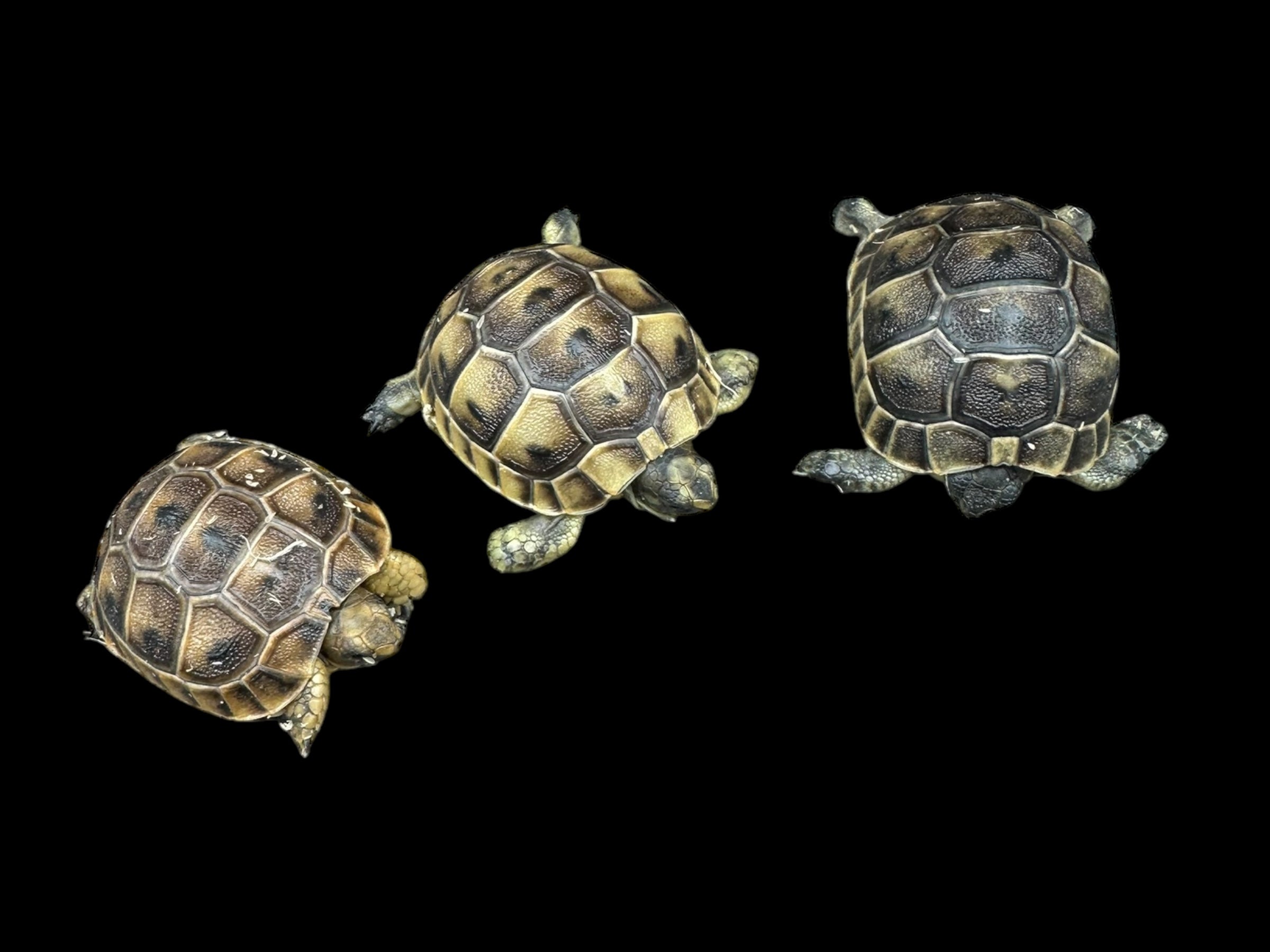Photo Disclaimer
Description
Found in North Africa, southwest Asia and southern Europe, the Greek tortoise inhabits a variety of habitats, including some that are particularly arid: rocky hillsides, Mediterranean scrub, forests, fields and meadows are all occupied by the Greek tortoise subspecies. A highly domed carapace joins the singly hinged plastron by a thick bridge. The coloration ranges from yellow-gold to dark brown or black. Flecks, borders, rays and spots on the shell produce a pattern reminiscent of a Greek mosaic, hence the common name. One to three raised scales, spurs or tubercles are located on either side of the tail, on each thigh (these spurs are the reason for the alternate name, the Mediterranean spur-thigh tortoise). The head is blunt with large eyes and the front legs exhibit large scales and thick, powerful claws. The supracaudal shield just above the tail is undivided.
Several subspecies of the Greek tortoise are recognized, which has enabled a high amount of confusion in regard to proper identification of captive specimens.



